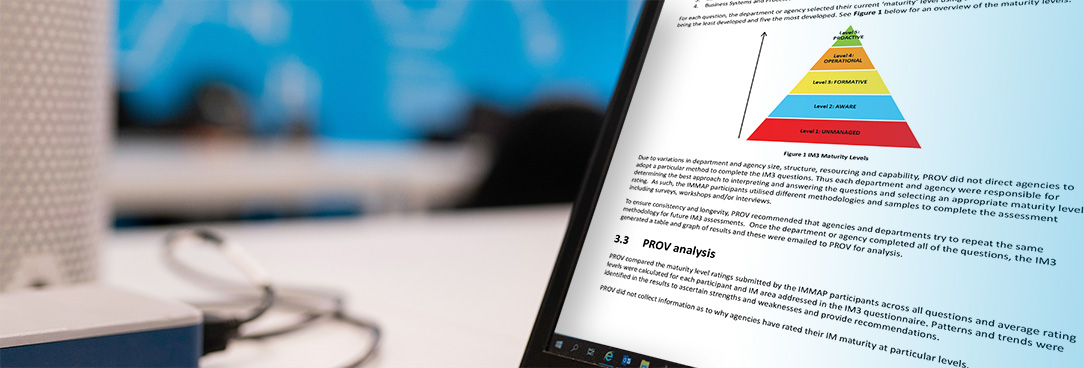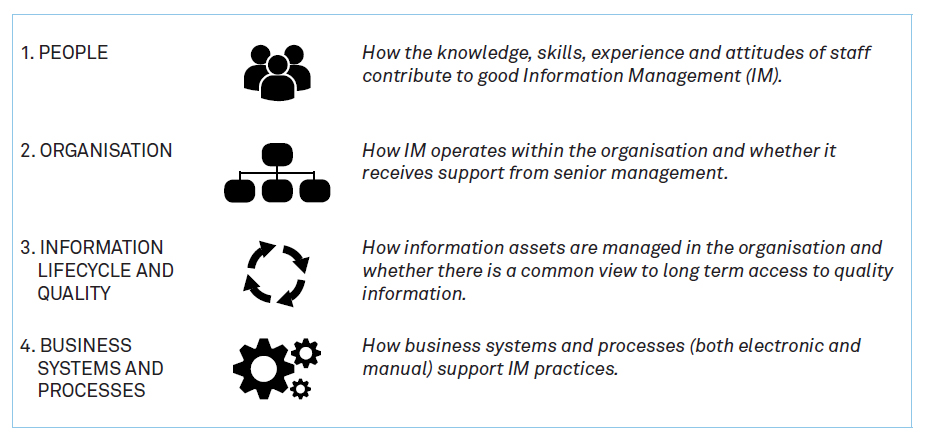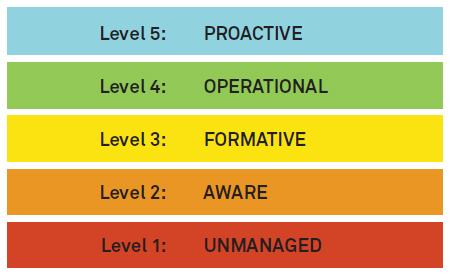
Author: Public Record Office Victoria
Public Record Office Victoria (PROV) undertakes the Information Management Maturity Assessment Program (IMMAP) every two years to assess the state of Information Management practice across the Victorian Government. All agencies subject to the IM STD 03 Information Governance Standard are required to participate. PROV also accepts submissions from additional agencies in the Victorian Government that are members of the Victorian Government Information Management Group.
Key findings
1. All previously participating departments and agencies maintained their 2015–16 ratings, achieving a level 2 (AWARE) average across the board.
2. A third of participants indicated their training and support as unmanaged while those departments with relevant training have seen improved awareness, understanding and capabilities.
3. Participants indicated rudimentary control of information integrity and access which is likely to reduce capacity to deliver services to the community effectively.
4. All respondents are well advanced in leadership, governance, vision & strategy providing a solid foundation for further development and maturity.
5. Organisational commitment to IM improvement is more likely if initiatives are linked to business objectives and processes.
Recommendations
1. Agencies and departments should continue to develop Information Management governance, vision and strategy, strategic alignment and management support and leadership. Once these are in place, organisations will be able to effectively improve performance ratings over time.
2. Agencies and departments should align Information Management initiatives with organisational objectives.
3. Agencies and departments should ensure that information is managed so that it meets business needs, thereby enhancing its value to the organisation.
4. System and process improvement should be prioritised to ensure that information is captured and usable, trustworthy, reliable and accessible for as long as required.
5. Agencies and departments should invest in building knowledge, skills and capability within their organisations by appointing qualified staff and delivering targeted training.
6. Agencies and departments should continue to work towards meeting existing and future requirements of the Enterprise Solutions Branch of the Department of Premier and Cabinet, Victorian Information Commissioner and Public Record Office Victoria to ensure information is created, captured, maintained and protected.
7. Investment in the IMMAP should continue in order to measure, understand and improve practices over time.
8. PROV continues to promote best practice, improve data collection and measure maturity.
How IMMAP works
The program requires participants to self-assess their Information Management maturity using the IM3 tool and then send their results to PROV. The IM3 tool is composed of a self-assessment questionnaire focused around four key dimensions:
Maturity levels for each dimension are self-assessed from level 1 (unmanaged) to level 5 (proactive):
Purpose
The IMMAP is designed to:
- provide a high-level overview of Information Management maturity
- identify and initiate areas for improvement
- form evidence to inform strategic direction and priorities for decision makers.
Report
Download a summary report here.
Download the full (de-identified) report here.
Material in the Public Record Office Victoria archival collection contains words and descriptions that reflect attitudes and government policies at different times which may be insensitive and upsetting
Aboriginal and Torres Strait Islander Peoples should be aware the collection and website may contain images, voices and names of deceased persons.
PROV provides advice to researchers wishing to access, publish or re-use records about Aboriginal Peoples


